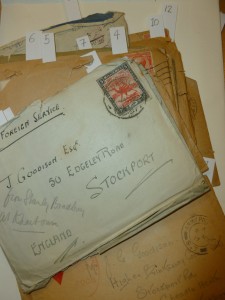As a part of the display for the ‘Explore Your Archives’ Campaign (on display in the library until the 14th December) I did a little bit of research about children in the Ragged School in Stockport.
Stockport Ragged and Industrial School was founded as a charitable institution for necessitous children. It was established in June 1854, and certified as a Ragged & Industrial school in 1866.
The annual reports of the school give an insight into the life of the children who were taken into the school – with detailed descriptions of their strictly ordered routines:
- “5.30 [am] – first bell; all rise, dress and make beds”
- “5.40 to 5.45 – Perfect silence must be observed for five minutes, which time is set apart for private prayer”
- “8.30 to 8.30 breakfast. During the time of meals, silence, order, and decorum must be maintained.”
- “Wednesday Afternoon – recreation or country walk in fine weather; if the weather be unfavourable, school work goes on as usual.”
In the archives we have a wonderful old photo album of children who were at the Ragged School. Some of their names are written underneath. The children are in varying states of disrepair, shoeless and dirty with ragged clothes full of rips and holes, they look badly cared for.
I was quite interested to find out where these children came from, and how they ended up being in the ragged school. I chose children who were featured in the photograph album, and found the children listed at the school on the 1871 census. This gave me a year of birth and birth place, and allowed me to discover a short biography about the child’s life. The school was located in Townend House on Higher Hillgate.
Frank Wilkinson 1864 – 1939
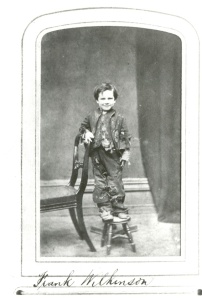
Frank Wilkinson was the first child I researched. In the photograph album he is my favourite child; he has a lovely cheeky smile on his face, even though his clothes tell a story about the hardship of his life.
He was listed on the 1871 census in the school aged 7, and I used this information to find that he was born in Heaton Norris 1864. Unfortunately because he was born after the previous census there is no way to find out any more about his early life, but tracing him on the 1881 census once he had left the school found him living back with his parents Thomas and Mary, the youngest of their seven children. He was working as a piecer in a cotton mill in Tonge, Lancashire (near Middleton). This was a job usually reserved for children which involved ‘piecing’ together the broken cotton. The mills were noisy and children would work for up to twelve hours a day. His brothers Joseph and Albert were also employed as piecers, and the rest of his family were employed in the cotton industry with the exception of his elder brother Edwin who was a brewer’s labourer.
In 1886 he married Ann Johnson from Congleton at St Michael’s Church in Tonge. They went on to have three children – Harriett, Albert and Adelaide, who also worked in the cotton industry. Frank died in 1939 in Middleton, aged 74.
Susan Spilsbury 1860 – 1947
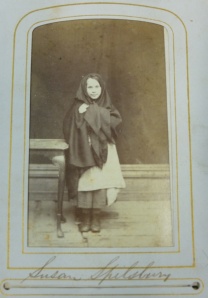
The next child I researched was Susan Spilsbury, in her picture she looks so sweet and innocent. She was born in 1860 so I was able to find her on the 1861 census, so find out a little about her life before the Ragged School. Susan was born out-of-wedlock in 1860. In 1861 she lived with her widowed mother, Elizabeth Dewhurst – a cotton weaver. They lived in a licensed lodging house on Bamford Street along with 40 other people – lodging houses were notoriously overcrowded and unsanitary with many requiring beds to be shared, at a cost of about four pence per night. With this start in life you can begin to imagine how Susan would be destined for the Ragged School.
In 1864 Elizabeth married Susan’s father William Spilsbury, a cotton rope maker, and they went on to have two more children – Thomas and Elizabeth. In 1871, aged 11, Susan was an inmate at Stockport Ragged & Industrial School, though her brother & sister were still at home with their parents – her father was working as a labourer & her mother was a housewife.
Aged 21 Susan was living back at home with her family, and was working as a cotton reeler – winding thread on to bobbins. In 1891 at the age of 31 she married Frank Goodier, a hat planker from Macclesfield who was 8 years her junior. Nine years later they had a daughter, Edith Lillian, who was born when Susan was 40 years old. In 1911 Susan worked as a charwoman, and her husband was a temporary postman. Susan died in 1947 in Stockport, aged 87.
Mary Jane Gore 1862 – 1936
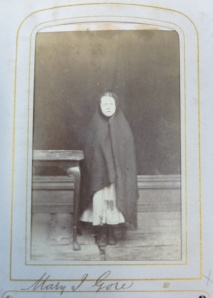
Mary Jane Gore was born in Woodley in 1860, on her marriage certificate she stated her father was George Gore, but we have been unable to locate her mother. We know that she was an inmate at Stockport’s Ragged and Industrial School in 1871.
In 1881, aged 21, she was working as a kitchen maid at the Union Club, Mosely Street, Manchester. The Union Club was for gentlemen, where they “may at any time be provided, in a superior manner and at a moderate charge with Provisions, Wines, etc.” Life for Mary Jane would have been gruelling, with long hours and physically exhausting work.
In 1887 she married Peter Heap, a stone mason from Burnley, at the Manchester Collegiate Church (now Manchester Cathedral). In 1881 she lived in Burnley with her husband and three children – Eliza, James & George. Her husband was working as a building contractor. She went on to have five more children, a total of eight children who were born between 1888 and 1901. In 1911 she was a housewife, living with all her children, who mainly worked in the cotton industry except for one who worked as a railway labourer. Mary Jane died in Burnley, Lancashire in 1936 aged 76.
Ellen Ogden 1858 – ?
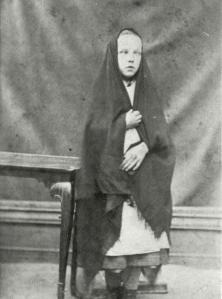
Ellen Ogden was born in 1858 in Stockport, daughter of Mary Ogden. I have been unable to find any information about Ellen’s father as he was not present at the 1861 census, though her mother claimed she was married. Her mother and brother Andrew were both born in Ireland – her mother was just 15 when Andrew was born, and it appears that some of Ellen’s siblings had different mothers. Ellen was the fifth and youngest of the children.
In 1861, aged 3, she was living with her family in a cellar on Welcroft Street with her mother, four brothers and sisters, and three lodgers. In 1861 there were approximately 790 people living in cellar dwellings in Stockport, of these 37% were Irish. Cellar dwellings were cold, damp and small, with the people who lived in them were prone to fevers and poor health.
In 1871, aged 12, Ellen was an inmate at Stockport’s Ragged & Industrial School. In 1881 her mother Mary was living on Small Street and working as a washer woman, with four boarders. Her brother Andrew was living with his family in Stockport, what happened to Ellen after she left the ragged school? We’re not sure – she may have married, she may have moved out of the area, or she may have died, but we haven’t found a trace of what happened to her next.
It was lovely to find some information about where the children came from, and where they went, and it was nice that most of the ones I researched lived to a ripe old age.
This information forms a part of a display about School Life in Stockport, which is currently at Stockport Heritage Library.
The information was compiled using the Birth, Marriages & Deaths index, and censuses from 1871 – 1911. Photographs from Stockport Image Archive S/T55.








